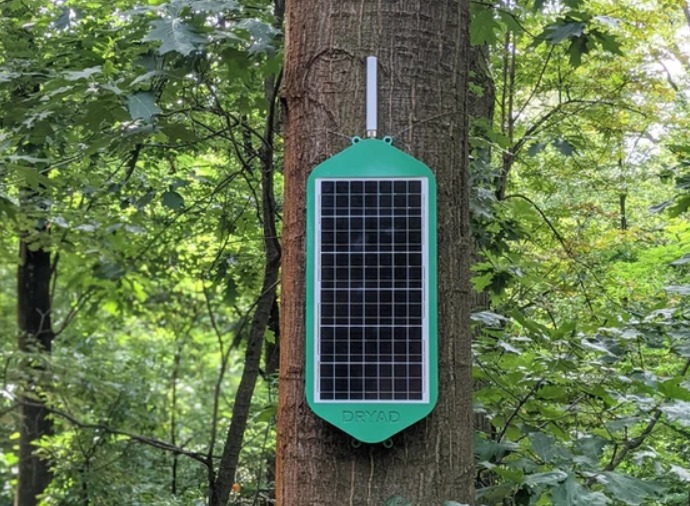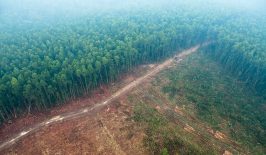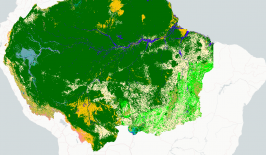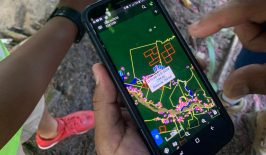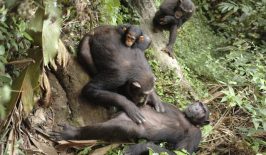Natural disasters, created and exacerbated by man-made climate change, have become increasingly common sights across the globe. Wildfires in particular can cause huge amounts of damage to ecosystems and communities, as well as releasing large amounts of carbon dioxide.
Early intervention is essential in tackling forest fires. As fires grow, they not only affect a wider area, but also increase in heat. In some cases, these can become so-called ‘mega-fires’ which are so hot they are resistant to fire suppression techniques. For example, in 2021, Californian firefighters discovered their air-dropped water evaporated before it hit the ground.
A Berlin-based startup is developing new technology which will hopefully give firefighters a head start in detecting and extinguishing forest fires. Dryad Networks has developed a system of networked Internet of Things (IoT) sensors which can ‘smell’ the air and provide information on where fires are developing and how they may grow.
Their solar powered sensors, known as Silvanet, use an AI system to detect abnormal patterns of gases, such as increase in hydrogen, as well as variables including temperature, humidity and air pressure. This can then be sent to fire and rescue teams via LoRaWAN technology – low power Long Range Wide Area Networks. Even in areas with little or no mobile service, the satellite radio connectivity of the Silvanet can pass information, including coordinates and maps, to firefighters with an accuracy of 10 metres. All of this can be achieved in around 30 to 60 minutes, providing firefighters with enough time to extinguish fires in their infancy with smaller, more mobile equipment.
Currently, Dryad Networks is conducting a pilot scheme in the forests around Berlin (which saw a recent forest fire) and refining the production techniques and scale of their sensors. Although focusing on creating a forest fire early warning system, Dryad’s sensors could feasibly also be used in other areas, such as general forestry management and even farming.
The Spread of Forest Fires
Although recent large forest fires in California, Australia, Greece and elsewhere have grabbed headlines, forest fires are a constant and growing danger. The NASA Earth Observatory shows the extent of forest fires every month, and everyday some forest somewhere is burning. According to the National Interagency Fire Center, there may be as many as 70,000 forest fires every year in the US alone.
In the long term, forest fires do play a beneficial role in the health of ecosystems, as they clear out old vegetation, allow new plants to take root and increase the important nutrients needed for new plants to feed on. However, humans have interrupted these natural cycles and increased their intensity. Natural fires usually burn at a low heat, while many trees in naturally fire prone areas have developed ways of protecting themselves. But now, around 85 percent of forest fires are started by humans, including in areas which have not developed these resistances.
Furthermore, the damage caused by those fires has increased. Warmer, drier summers means the fires can travel at terrifying speeds, creating larger burn areas. In the US, the area suffering severe burn damage has increased by as much as 23 percent in some states since the 1980s. The speed of the fires also creates challenges for fire crews as well limiting the ability of wildlife and locals to escape. The UN expects the number of forest fires to increase by 14 percent by 2030 and 30 percent by 2050.
Traditional fire warning systems – such as firewatch towers – are based on human observation of spotting the smoke often from many kilometres away. By this point, the fire may have already grown to a significant level. The benefit of the Dryad system is that it detects fires during the smouldering stage when they can be much more easily managed.
